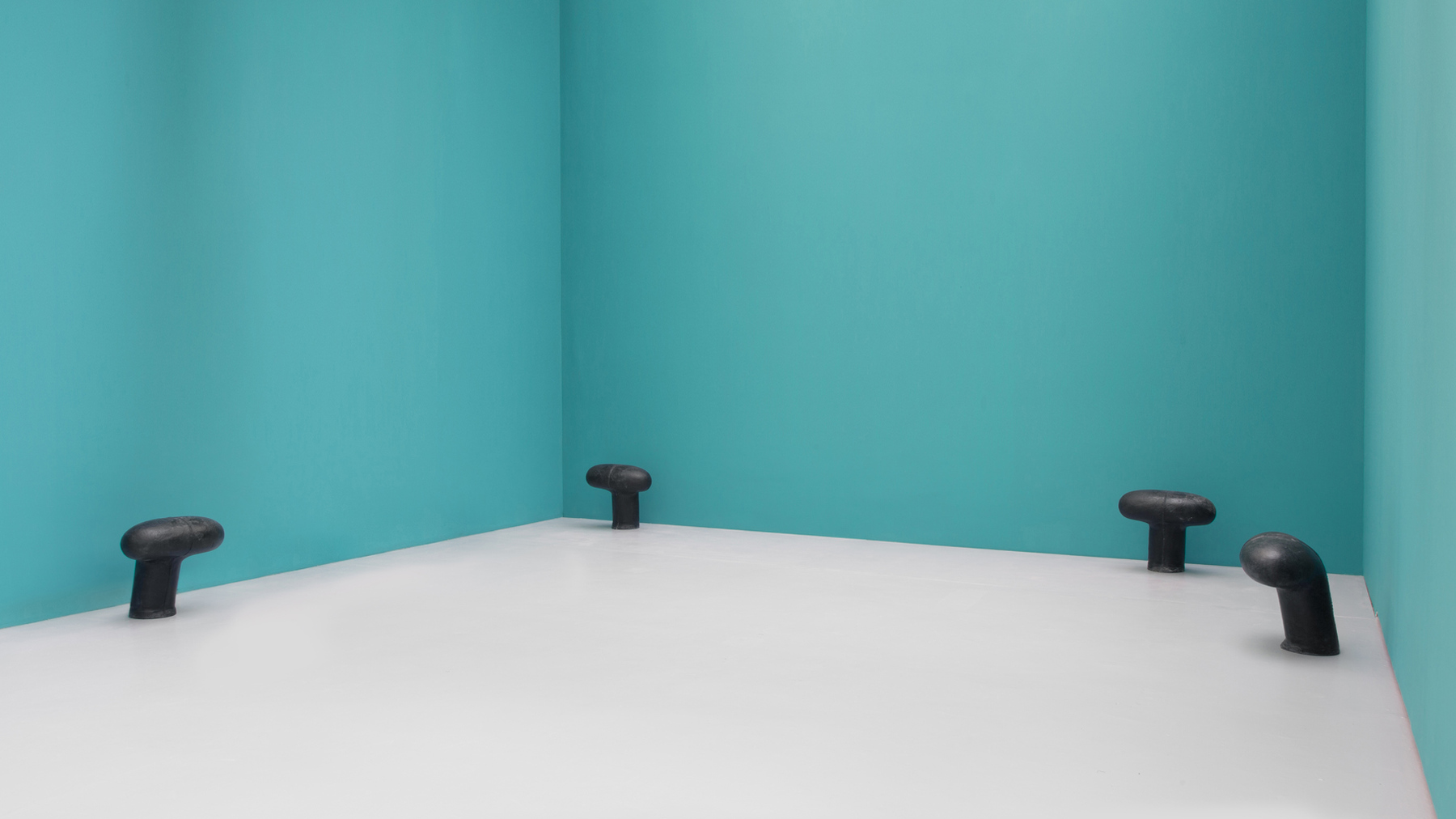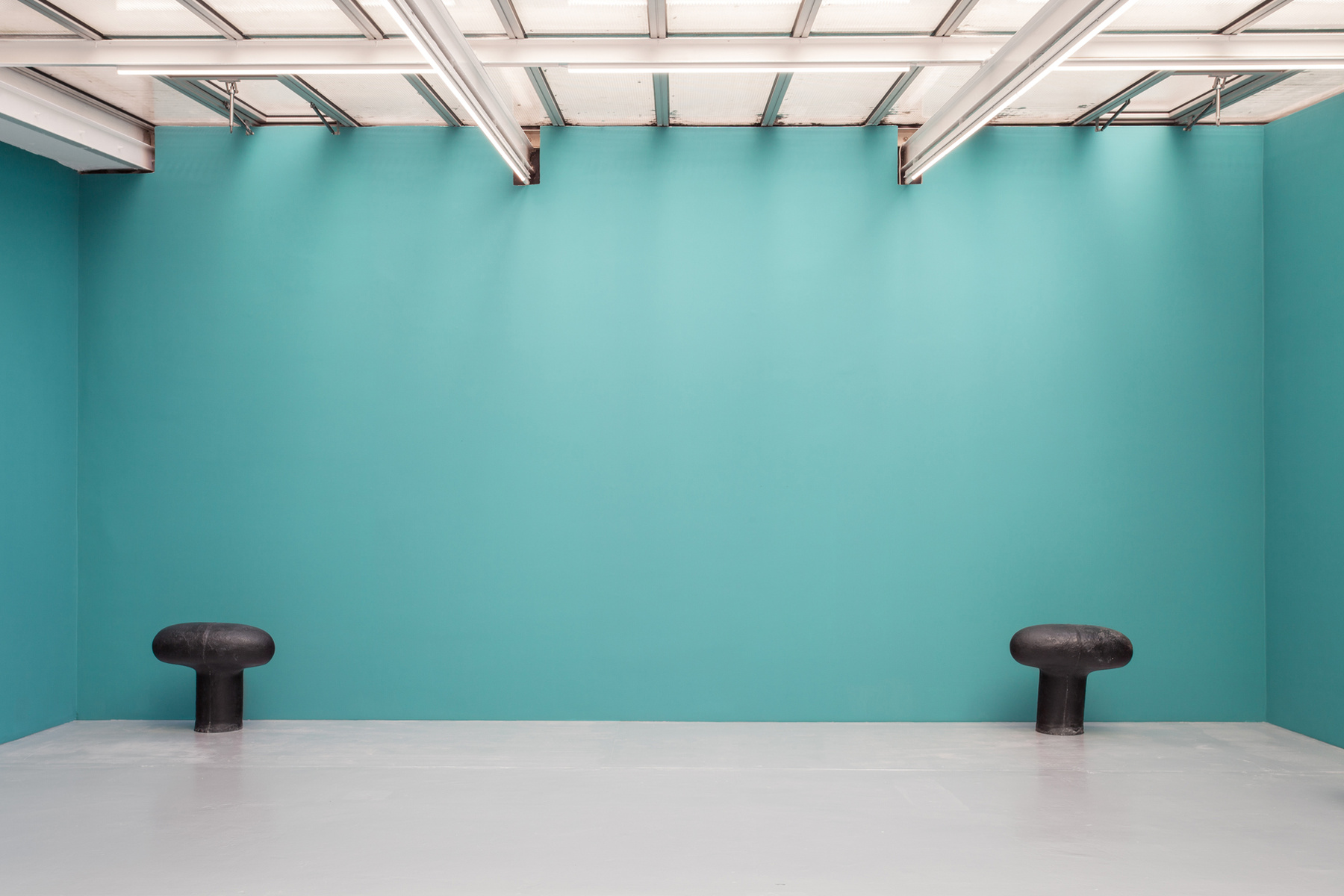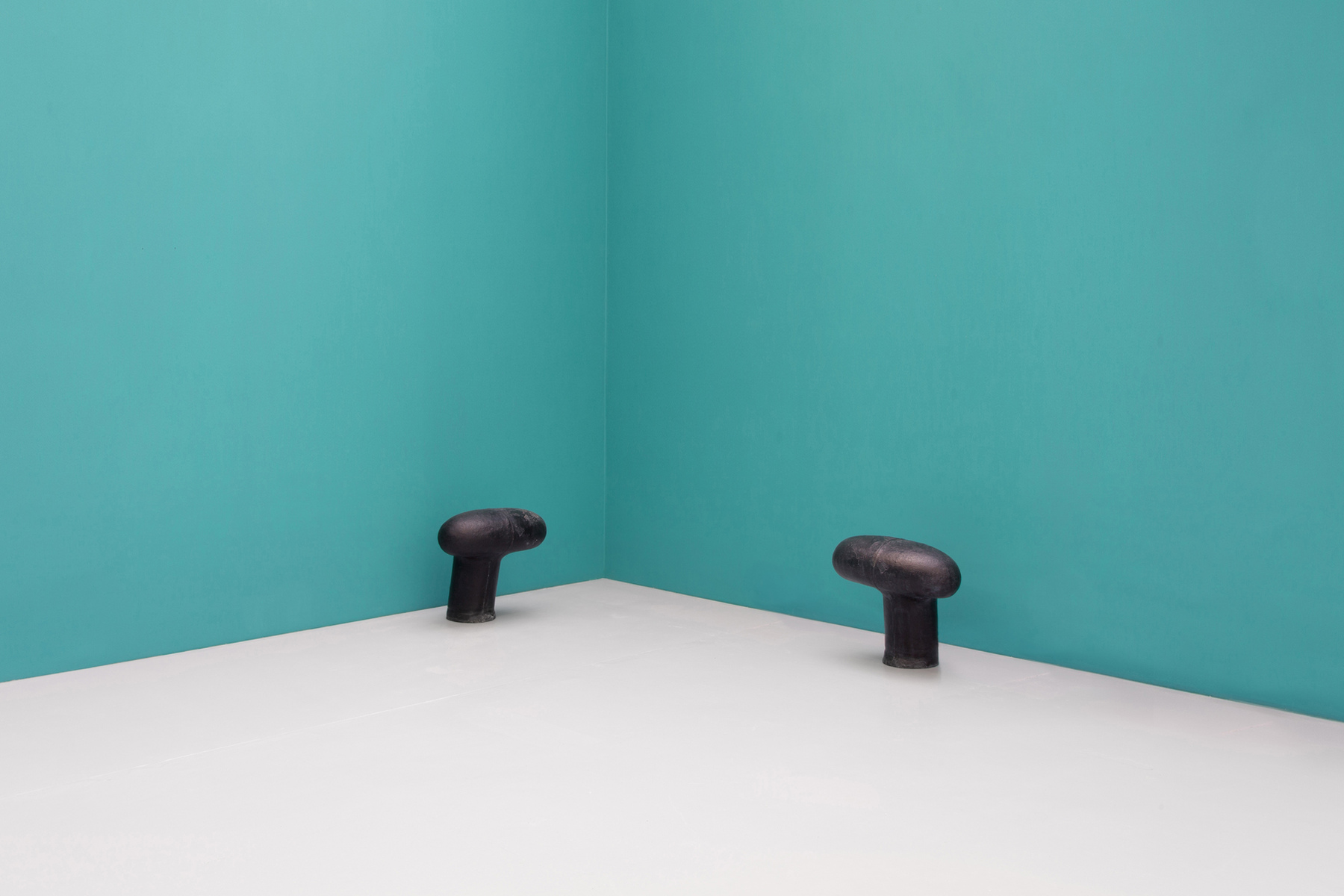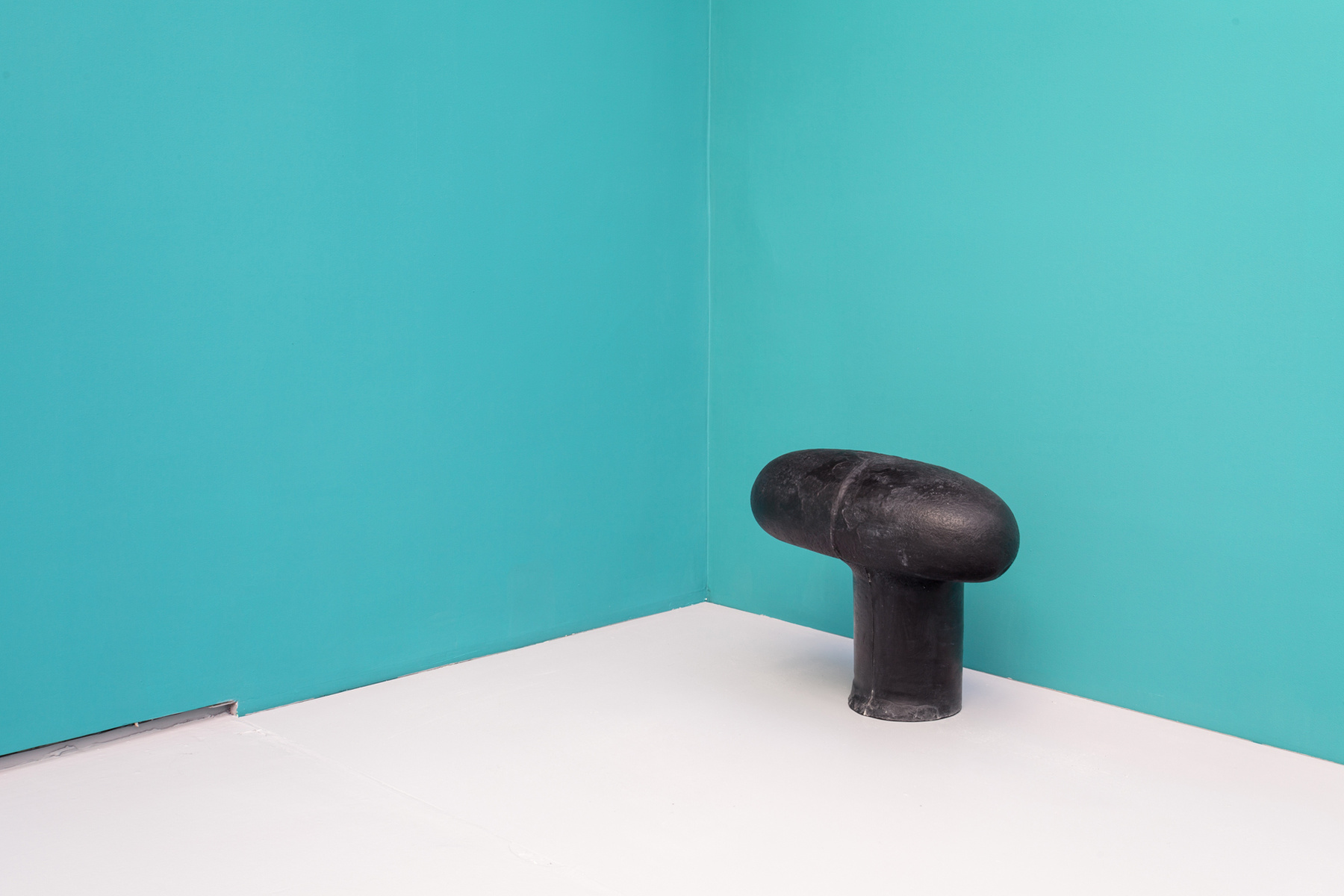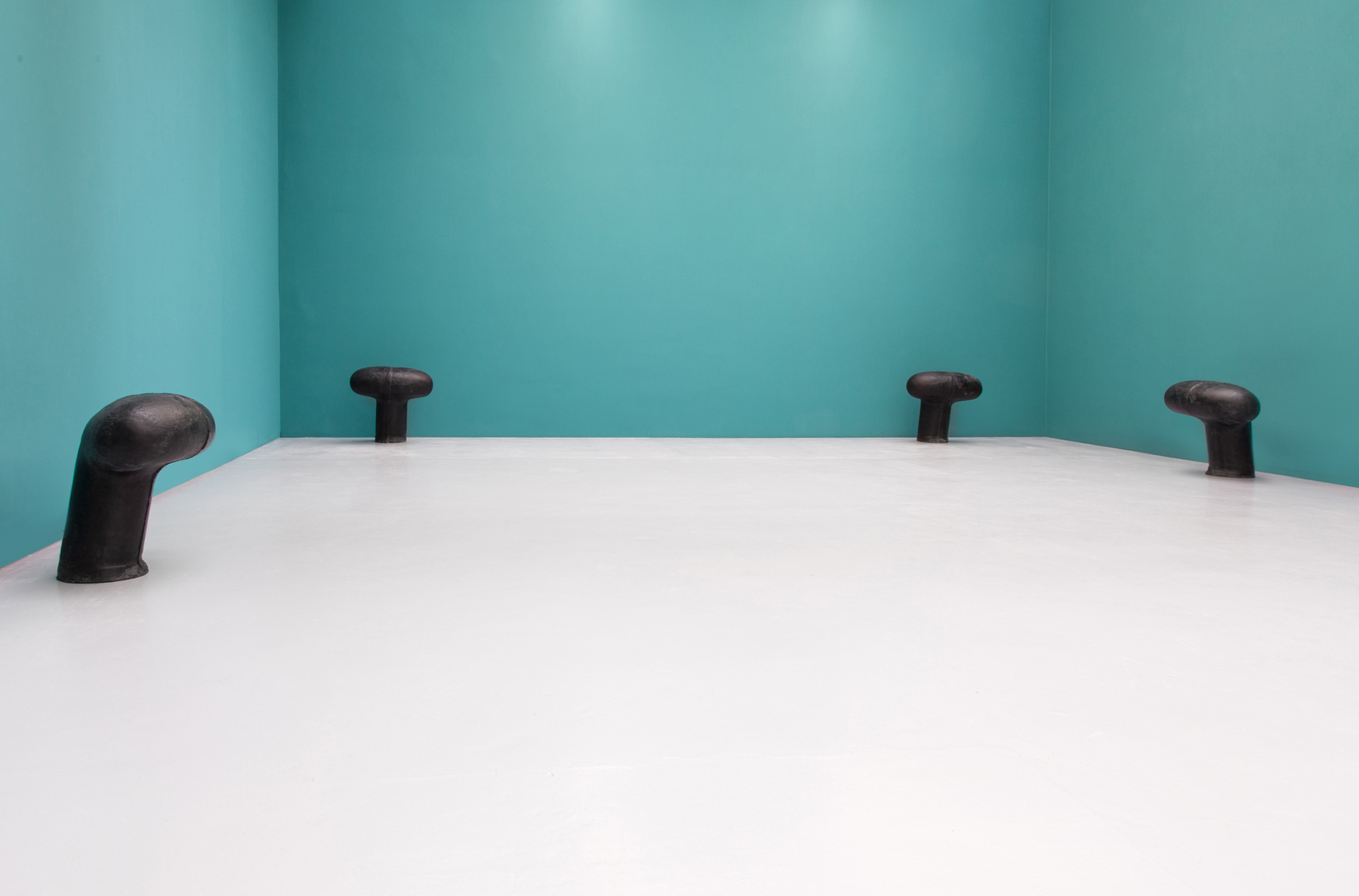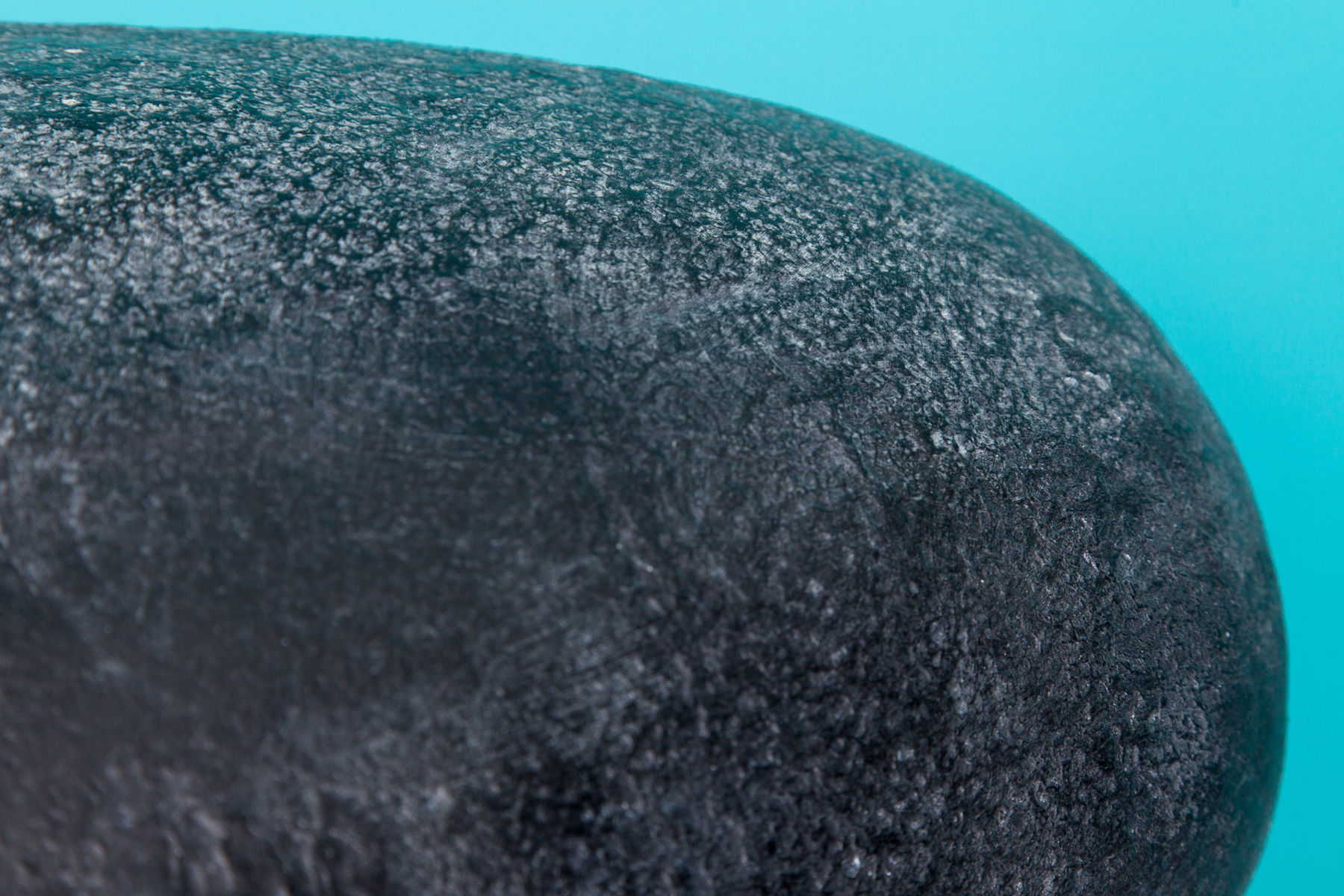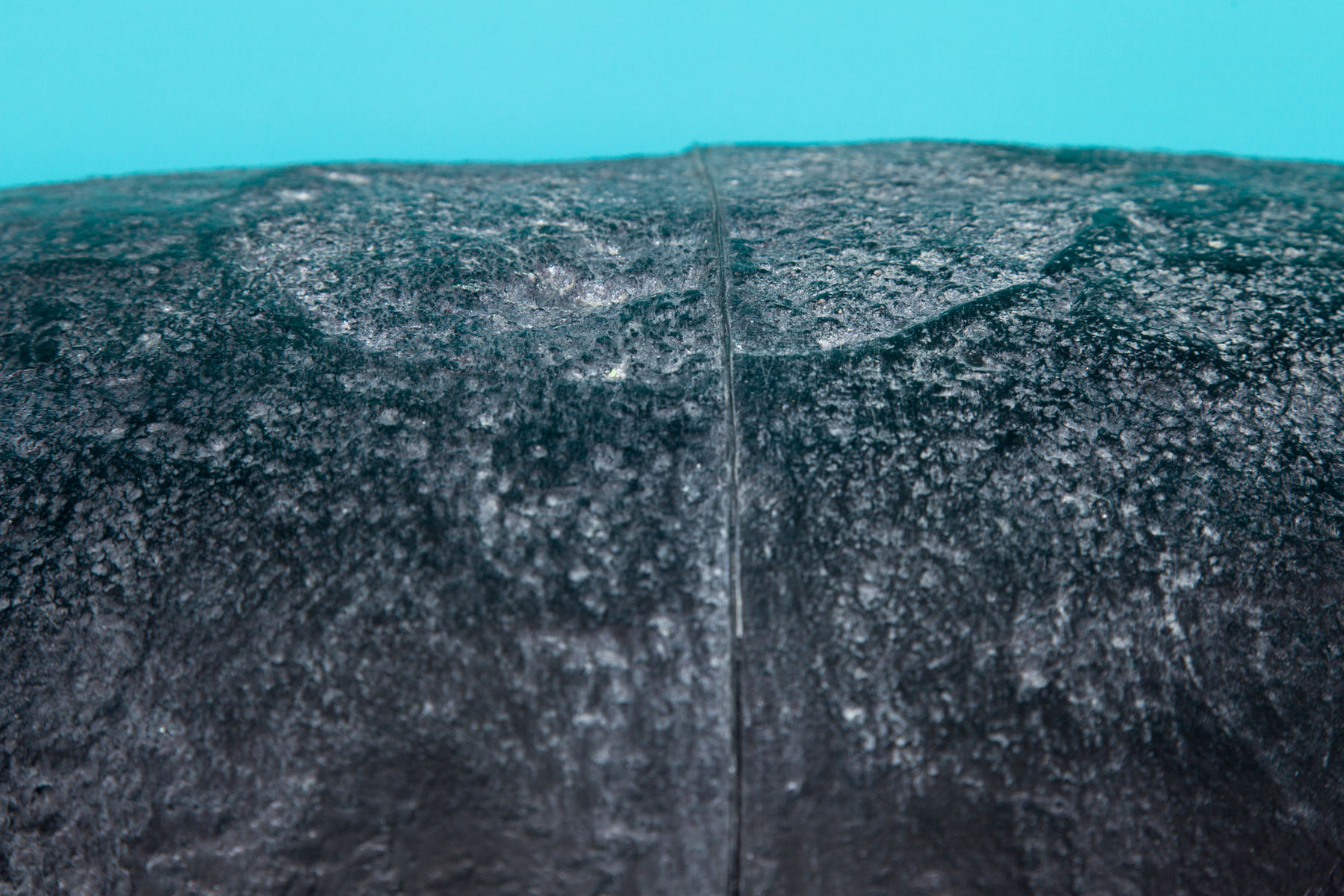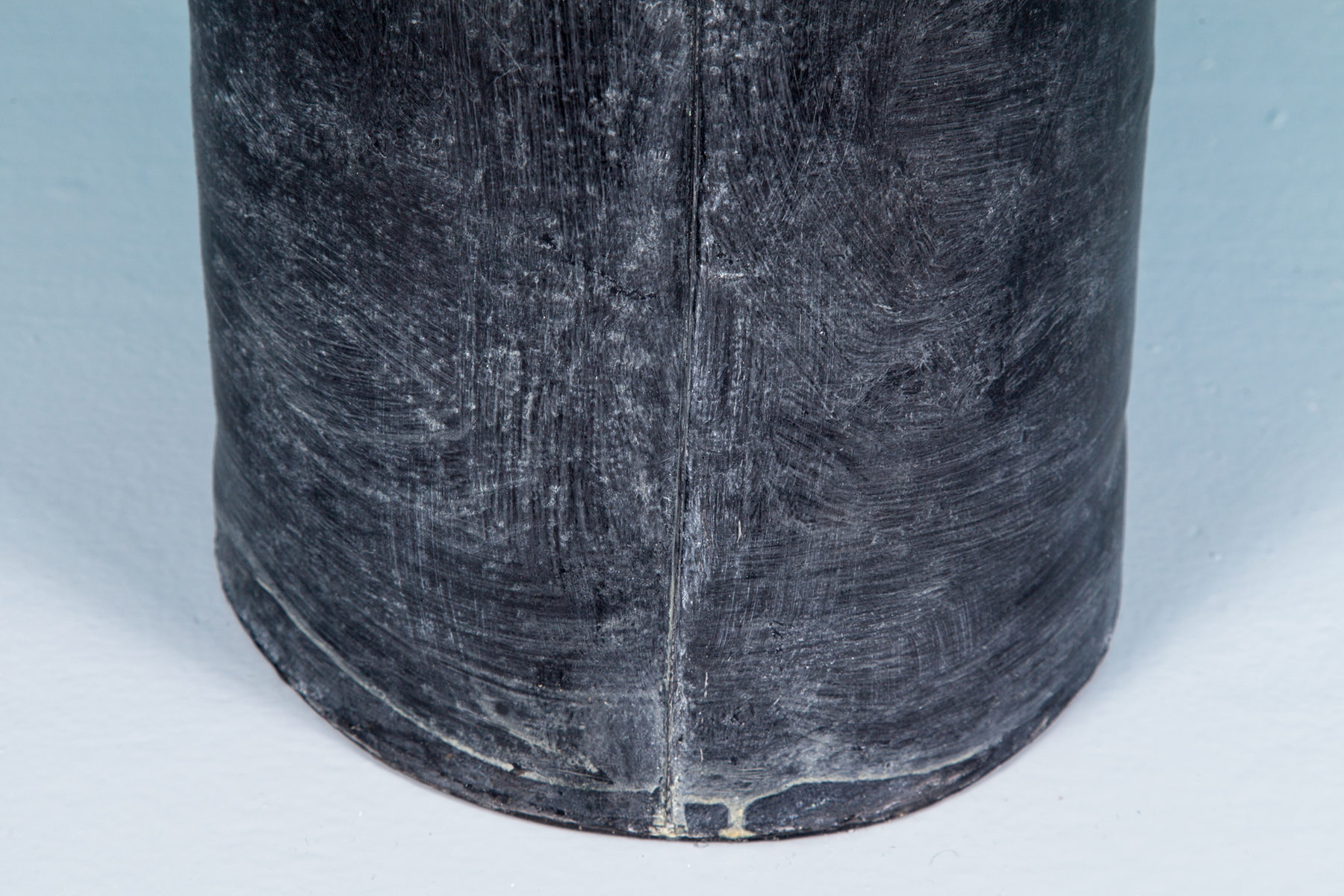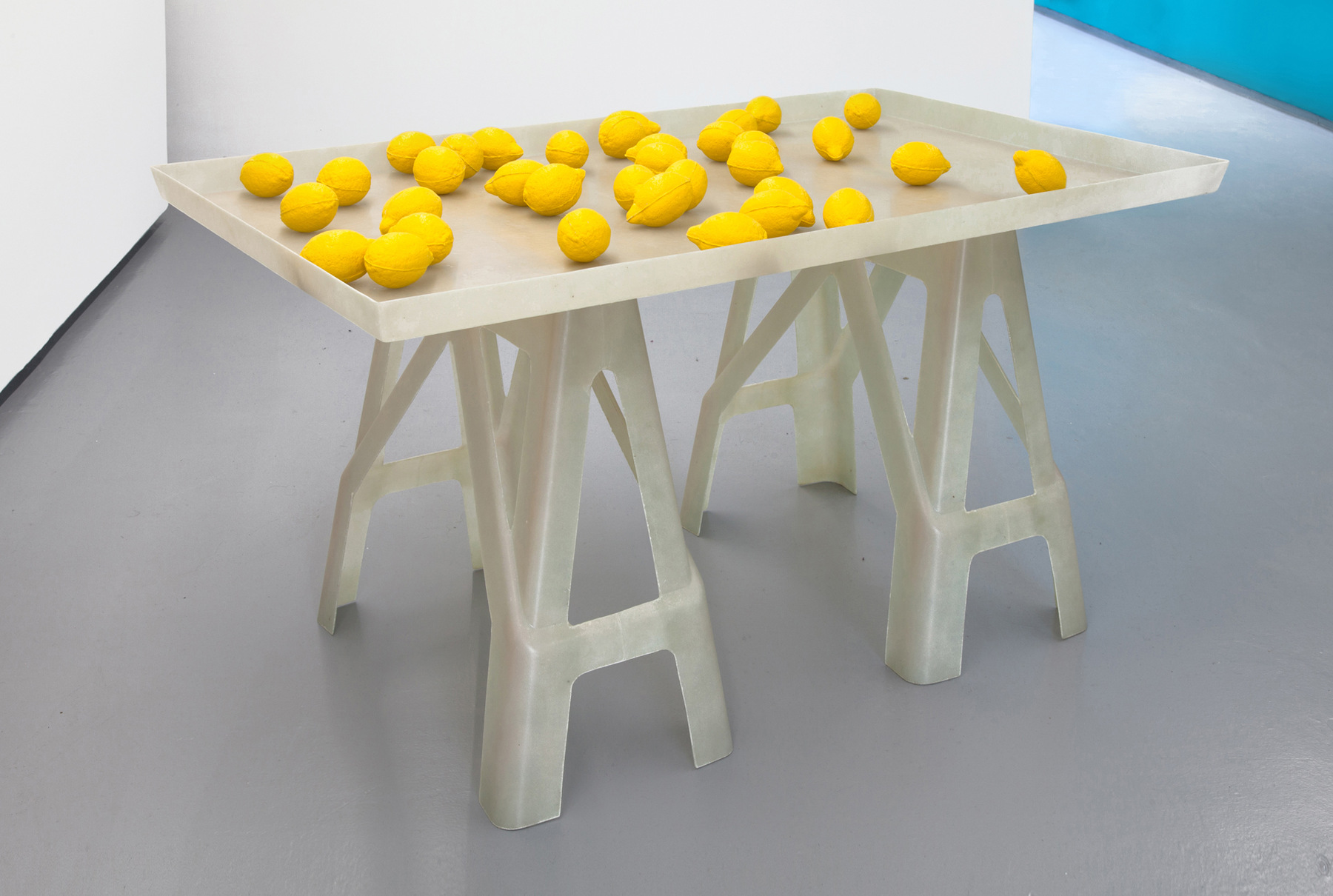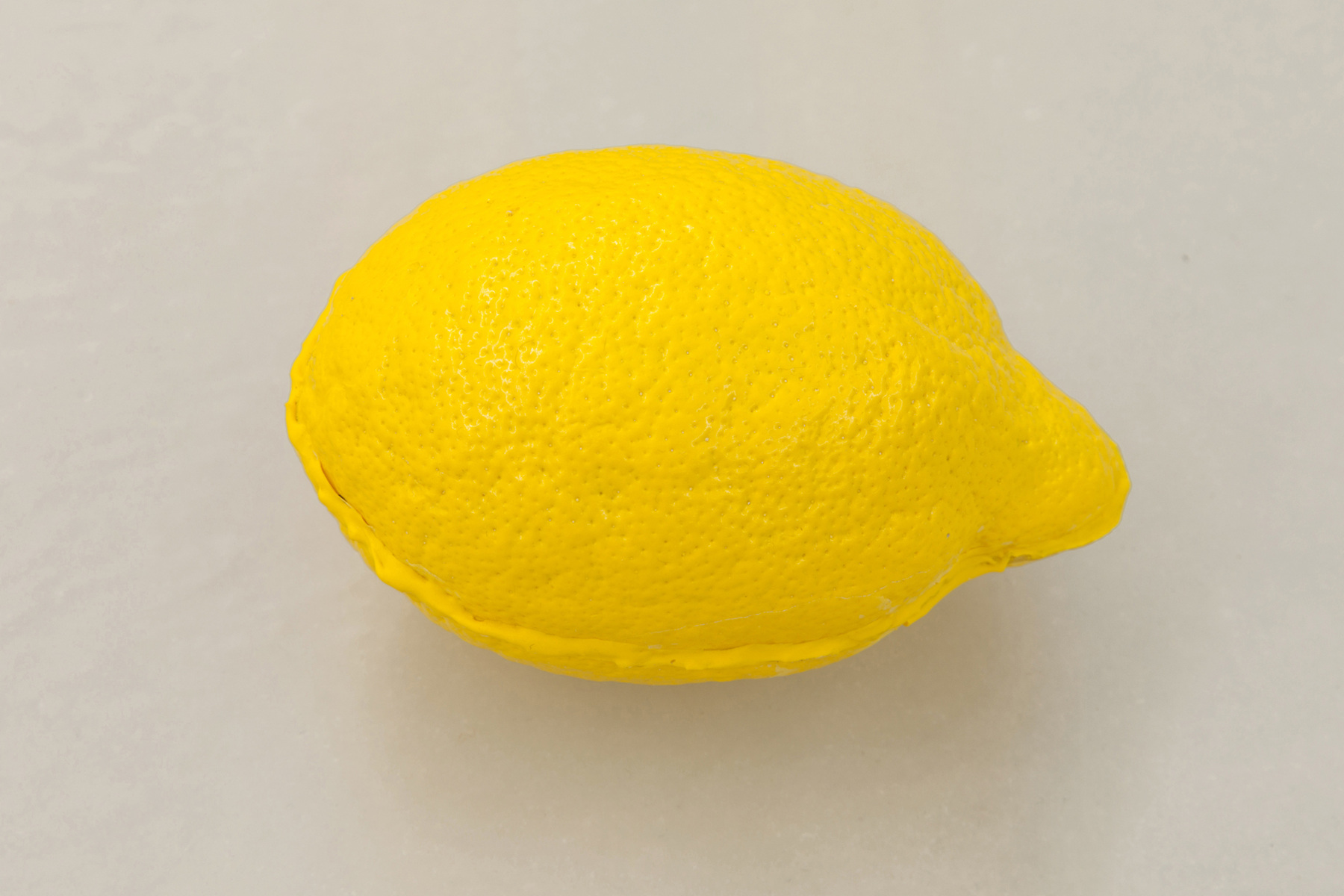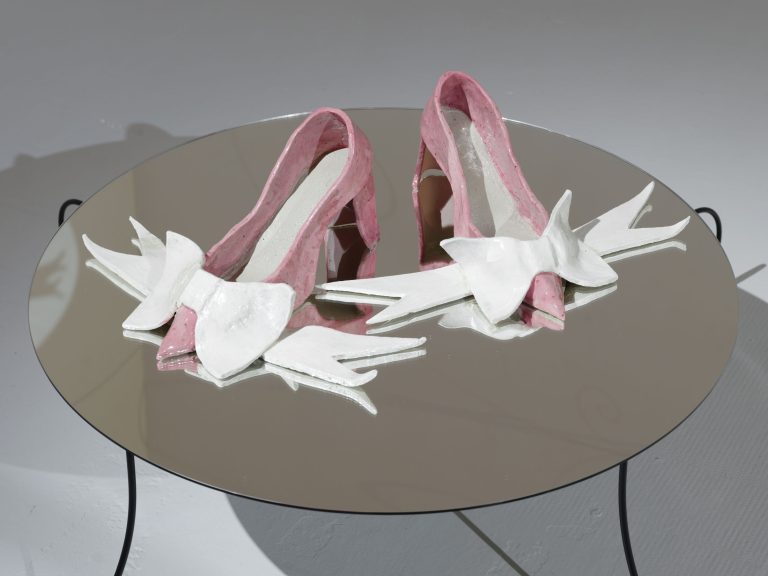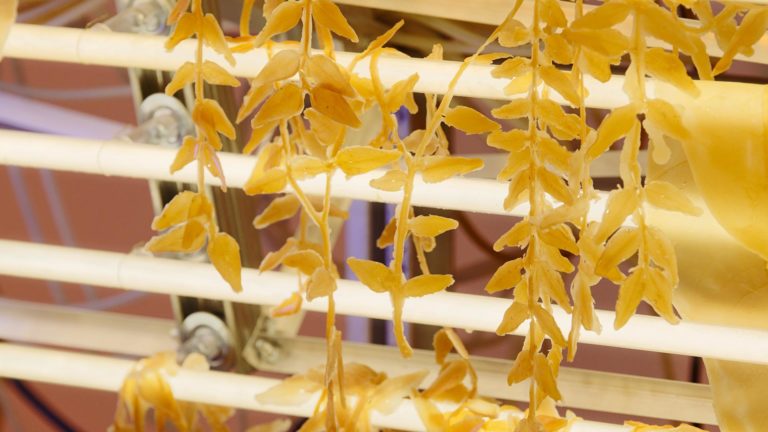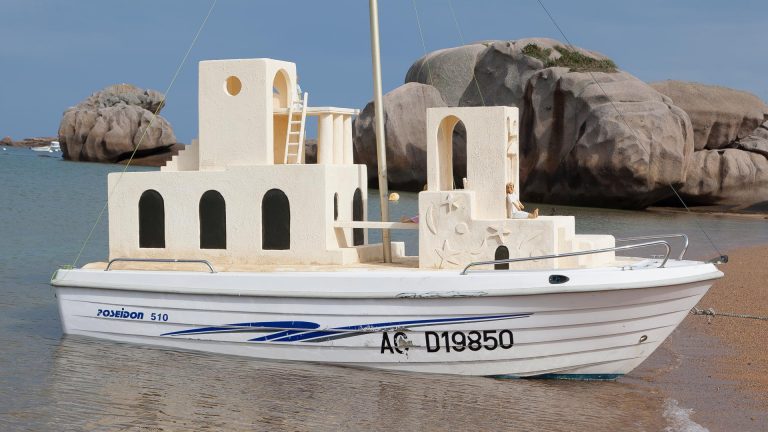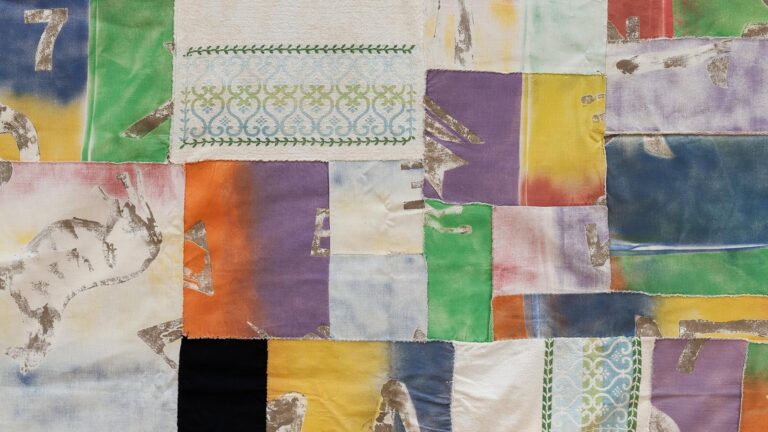Artist: Etienne Bossut
Exhibition title: Maintenant, j’habite près de la mer (Now, I Live by the Sea)
Venue: Valentin, Paris, France
Date: November 26, 2015 – January 9, 2015
Photography: Sylvie Chan-Liat, images copyright and courtesy of the artist and Valentin, Paris
“The Dutchmen, now, we see them painting things just as they are, apparently without thought (…) They make portraits, landscapes, still lifes. One could be stupider than that and commit greater follies. If we don’t know what to do, my dear old Bernard, then let’s do the same as them, if only so as not to allow our scarce mental powers to evaporate in sterile metaphysical meditations that aren’t up to bottling chaos, which is chaotic for the very reason that it won’t fit into any glass of our calibre. We can — and that’s what those Dutchmen did, desperately clever in the eyes of people wedded to system — we can paint an atom of chaos. A horse, a portrait, your grandmother, apples, a landscape. ”
Letter from Vincent Gogh to Emile Bernard (1888)
“The essence of art is mimetic” Adorno said. It imitates its own internal logic, being an “ execution of objectivity”, and an emancipation with regard to the means of production.
At the outermost bounds of post-conceptual practices based on theories of reproduction and series, of the legacy of readymades and classical sculpture, Etienne Bossut develops a chimerical, materialist art whose expansion and accumulation modalities always tend to sow confusion in the space, in its density and depth. Since the beginning of his career, Etienne Bossut has regularly examined the inertia of industrial forms through his mimetic strategy. And through those casts of our actions, expectations and modern social customs, he has explored the ability of human beings to leave a trace in a world characterised by novelty, standardisation and obsolescence. By casting forms chosen for their everyday proximity, Bossut has immortalised this non-memory of the new, while inserting a slight “flaw” in the cast’s translation, a slight twist infringing its material and symbolic stability. Despite their methodical organisation, into object typologies, into generations, Bossut’s forms generate a qualitative uncertainty in the rigid balance of our relationship with the world of “things”, this suspicion residing in the infrathin difference that separates and joins the object and its copy, reality and its facade, the irreplaceable and the ordinary. This difference is often partly manifested in visible marks left by the seams of the cast. Etienne Bossut’s object choices are necessary: linked to a precise context (painting and casting what is right in front of you when you are in a particular place), but they are also arbitrary, always having some leeway of artistic illegitimacy at their disposal: standard, neglected or invisibilised objects, objects that already came from casts, whose re-presentation takes us back to the big questions raised by the image artists of the 1980s (“the pictures I make are really ghosts of ghosts” wrote Sherrie Levine), to the question of the art object as a third version. It also raises a whole series of questions on authority, intentionality, authorship, citation and simulacrum. However, in Bossut’s work, casting—an “institutional function”—is something that confers privilege, singularises objects, sanctifies banality, in order to carry out a “redistribution of the gain in distinction” (Allan McCollum).
For his next exhibition at Valentin gallery, Etienne Bossut offers a panorama-installation, basing his work on a reduction of the standard notion of landscape, presented in the state of decomposed and diluted signs. Standing out against a background of blue turquoise paint are a set of new pieces, “object-images”, created using his technique of casting objects in coloured polyester.
“Maintenant, j’habite près de la mer” [“Now, I Live by the Sea”] makes reference to the artist’s new geographic position, to that new proximity to the maritime imagination, out of which he has cast generic elements, mooring posts. These evoke the stability of anchoring, as well as the liminal zone between liquid and solid, movement and stagnation. Placed near the gallery’s walls, the casts become markings, like beacons delimiting the empty space at the centre of the gallery, transformed into a hypothetical imaginary quay, in order to examine walls as illusory limits: screens in front of which a Beckettian waiting seems to be taking shape in the viewer. Their abstract, massive, repetitive form evokes objects both formless and standardised, specific and trivial, which at the same time have an aesthetic autonomy, an appearance of weight and density that links them to the field of sculpture. Unlike the artist’s signature plastic casted chairs, these elements have lost their usability in the cast’s translation, which caused them to lose their weight.
Initially, these objects serve to moor those same freighters that one can imagine importing shiploads of mass-produced objects that the artist has been replicating throughout his career. Shiploads of contraband as well—the art and arms trade (“La beauté des canons” [“the beauty of cannons”] and pirating (counterfeits, fakes, doubles) being recurrent in Bossut’s work. It is a reference that could be supported by the blue of the wall-covering, inspired by the colour of Tintin’s jumper on the cover of The Red Sea Sharks (Casterman). Unless it is a matter of changes in “exotic” products, such as lemons placed on casted trestles, almost levitating, as a prelude to the exhibition. Their stand, neutralised with a translucent colour, accentuates the spaces between the fruits while annihilating the logical principle of unity: the idea of a background to which objects/figures are anchored.
This game of elliptically reconstructing a “paradigmatic” landscape by transplanting and sampling chromatic signs (the blue and yellow, the “quay” grey of the gallery floor) and utilitarian forms repositions the installation in relation to pictorial flatness.
This landscape evokes a maritime encounter, brings us back—as always in the artist’s work—to the tension between physical, conceptual, ironical distance, and proximity, contact, fusion, in the semi-tautological protocol of mimesis. In a time of intense dematerialisation, Etienne Bossut’s indicative, artisanal strategy, which aims to preserve a physical link to the referent, also testifies to a search for the absurd: attaching himself to solid land, to an empirical reality that in essence seems to adopt only a liquid, fluid form. This anachronistic slowness of the artisanal crafting process that Bossut repeats is often referenced in the objects themselves: a waiting chair, cross-country skiing, and now a mooring post. The reduction effected for this exhibition can also be imagined as a visual representation of the point of view of an entropic decline of serial imagination and of the object-multiplication principle that has preoccupied the artist: a counterpoint Bossut never lets viewers settle into (one does not sit down on these objects); leaving them “in between”.
But it is the lack of mooring that produces this effect of vacuity, leaving the viewer in a floating state between a fiction that does not fully achieve its effect, and a reality carrying the burden of an emptiness and a “metaphysical” inconsistency, between contemplation and deception.
Text by Clara Guislain
Etienne Bossut, Bitte schön, 2015
Etienne Bossut, Bitte schön, 2015 (detail)
Etienne Bossut, Bitte schön, 2015 (detail)
Etienne Bossut, Bitte schön, 2015 (detail)
Etienne Bossut, Bitte schön, 2015 (detail)
Etienne Bossut, Bon marché, 2015
Etienne Bossut, Bon marché, 2015
Etienne Bossut, Bon marché, 2015 (detail)
Etienne Bossut, Bon marché, 2015 (detail)
Etienne Bossut, Bon marché, 2015 (detail)





